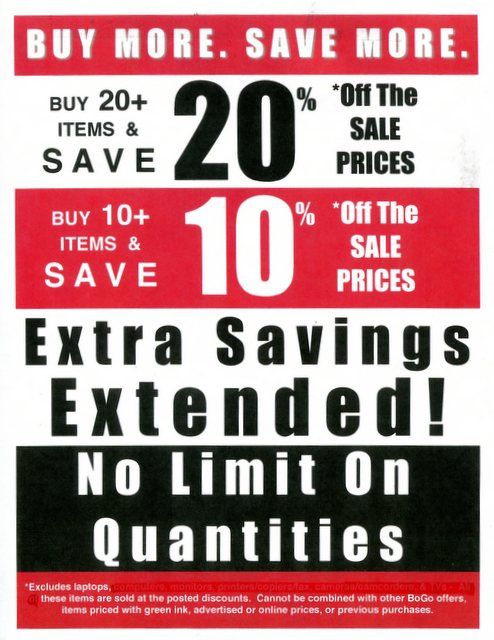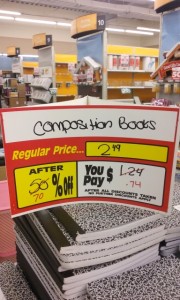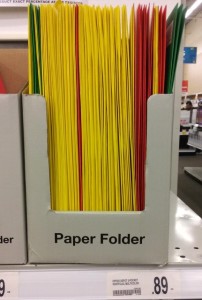How Much Would You Pay for a 20% Discount?
A local Office Max is going out of business and is having a very interesting sale.
I’m not sure I’ve ever seen a sale where you earn a discount by purchasing a certain number of items. Of course, I immediately began exploring the mathematical consequences of the policy.
The first thing that occurred to me was that you can essentially purchase a 20% discount. Say you need to buy n items. Simply buying another 20 – n items earns you a 20% discount. The natural question is thus, “Under what circumstances would buying an additional 20 – n items be worth a 20% discount?”
There are a variety of factors to consider. For example, if you can just find an additional 20 – n items that you are happy to buy, it’s definitely worth it: you get the 20% discount, and you get items of value to you. Also, the answer likely depends on n: if you are only 1 item short of the discount, it’s easier to justify an unnecessary purchase than if you are, say, 19 items short.
As an extreme case thinker, I considered the following scenario. Suppose I wanted to buy one item; under what circumstances would I buy 19 items I didn’t want in order to get a 20% discount?
Obviously, the key to this strategy is finding a cheap item to purchase 19 times. I thought I had found the cheapest possible item here:
Nineteen composition books would cost me $14.06. If the 20% discount saved me more than $14.06, this strategy would be worth it. This sets the bar for my one item at $70.30.
However, I later realized I could do better here:
These paper folders cost more per item, but unlike the composition books above, the folders are themselves eligible for the 20% discount! Nineteen folders would cost $16.91, but they’ll be discounted 20% to $13.53. This means if my single item cost more than $67.65, this strategy would save me money.
I could have done a lot better if these Slim Jims were sold here, or these 10-cent envelopes! But this is the best I could find in the store.
Another interesting question to consider is “For what range of prices would buying nine additional items, to receive a 10% discount, be a better strategy than buying 19 additional items, to get the 20% discount?”
In any event, I appreciate Office Max giving me something interesting to think about as I waited in line. And as usual, I waited a very long time. Let’s just say it’s no surprise they are going out of business.



2 Comments
Kenneth Tilton · January 7, 2016 at 9:57 am
In the extreme case, where n=1 (let’s say toner cartridge) and I am buying 19 more items I would not have otherwise, and I am simply looking for 19 cheapos of no value to me…ouch. I am only getting 20% off a toner cartridge at the cost of those 19.
But what if there are other items I *can* use. And what if I get a laptop instead of a toner cartridge? But now we have to worry about the real value to me of that new laptop, since I was not shopping for one eventually.
And what if my filler is 19 toner cartridges, which would take 19 years for me to use up? Now we get into present-value computations!
I am reminded, btw, of compulsive shoppers who cannot resist apparent deals and end up renting storage units to keep the excess stuff they never could consune — there could be a much different lesson in that.
Good stuff.
MrHonner · January 8, 2016 at 10:21 pm
Yes, there are lots of good variations and extensions to this question. I especially like your present/future value idea!